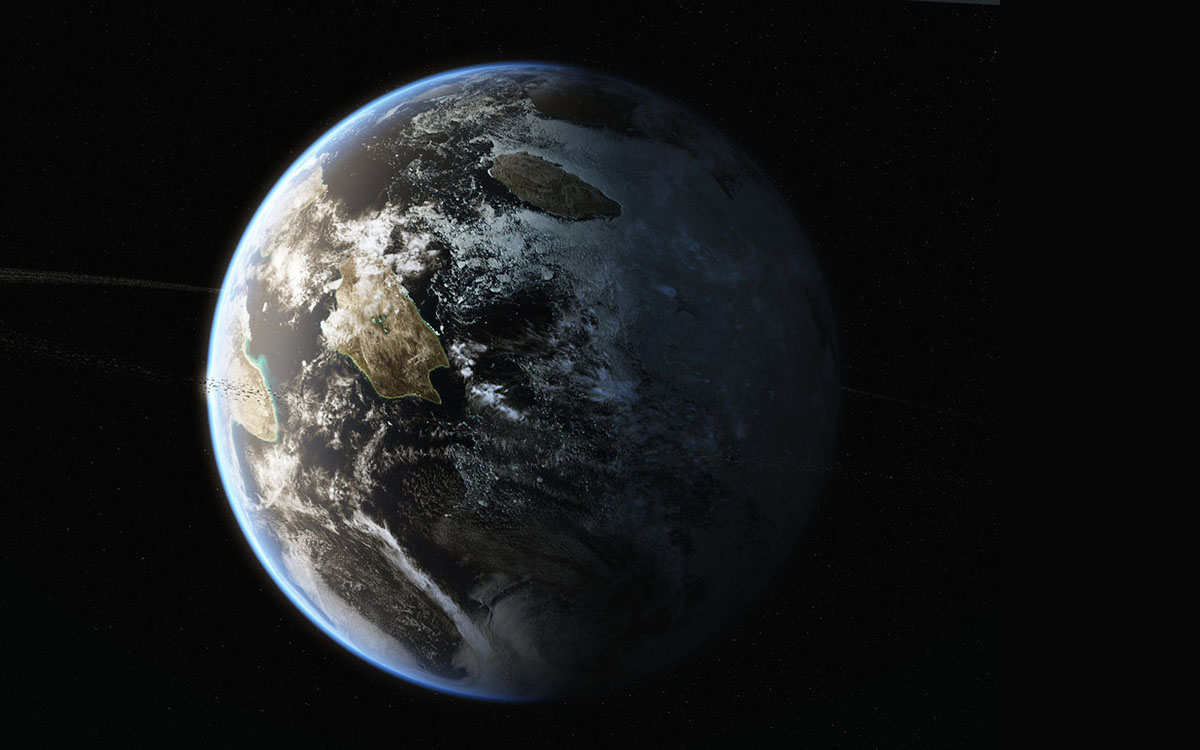did we really discover the day that venus turned to hell?

As we’ve noted before, astronomers had very high hopes for Venus until reality reared its ugly head. The question became not whether the planet was Earth’s twin but how long it’s been a volcanic hellscape. Current scientific consensus holds that Venus may have started as a warm, wet, pleasant planet with a temperature range similar to what we find in the subtropics and deserts on our own world, and vast oceans of liquid water, but after millions of years of being exposed to twice the solar radiation of Earth, and with few places to store the carbon dioxide produced by natural volcanism, a runaway greenhouse effect effectively killed the planet.
Now, a study by Michael Way at The Goddard Institute of Space Science wants to add a little more nuance to that hypothesis. According to his simulations, it’s possible that instead of billions of years of steady warming, Venus was altered in a single, massive resurfacing event 700 to 750 million years ago, after spending the better part of 3.5 billion years as a watery tropical paradise. Imagine massive volcanic scars tearing through the surface and pumping vast amounts of greenhouse gases into the atmosphere like the Deccan and Siberian Traps which may have played key roles in mass extinctions here on Earth, but on a scale several orders of magnitude greater.
But the problem is that an event like this should leave a smoking gun or two, allowing us to see at least some trace of the culprit. Unfortunately, after mapping Venus with numerous sensors, we can’t do that. We also don’t know if the runaway greenhouse effect it experienced could be connected to whatever impact or gravitational anomaly made it spin so slowly around its axis that its day is longer than its year, or if that happened so early in its formation that it wouldn’t have mattered. What we do know is that carbon dioxide in its atmosphere should have come down, been absorbed by silicates, and kept locked away for eons while the planet’s surface supported deep, salty oceans, almost idyllic temperatures, and possibly complex multicellular life.
So, what happened? How could a singular event upend billions of years of stability without leaving an obvious trace? Do we simply not know what to look for or where we should be looking in the first place? Or did Venus’ volcanism erode or warp the evidence we need to be sure about its fate? In a way, we could look at the Permian extinction which came unsettlingly close to sterilizing Earth 252 million years ago. What if our world didn’t have enough carbon sinks and ecological diversity to recover? Would it have turned into a cooler Venus? The bottom line is that we still don’t know what happened to our planetary twin, and the fact that we don’t means we still have a lot left to learn about why some worlds become habitable and others die.
See: Way, M., et. al. (2016) Was Venus the first habitable world of our solar system? Geophysical Research Letters, DOI: 10.1002/2016GL069790





